“How To Make A Mint.”
This past May, we received a letter from David Shenton on his 75th birthday, in which he thoughtfully answered our interview questions. We warmly congratulate David on his remarkable 40+ year career as a cartoonist and are delighted to feature him on our museum blog this Pride Month. David’s comics have vividly depicted the gritty realities of gay life, since long before the term “LGBTQ+” existed. His latest comic collection “Forty Lies“, published last December, is an autobiography covering his life from his teens to his 70s(with his unique queer knitting patterns) and it is also a chronicle of more than half a century of LGBTQ+ history. New, young readers may be struck to learn that, how until recently living as a gay person, and loving someone as you are could even be considered a crime. This real living record of his struggles with various unreasonable challenges, wrapped in jokes and humor, reminds us of the communicative power of the art form of cartoon. In this interview, we asked David about how he got started as a cartoonist and what motivates him to continue creating to this day.
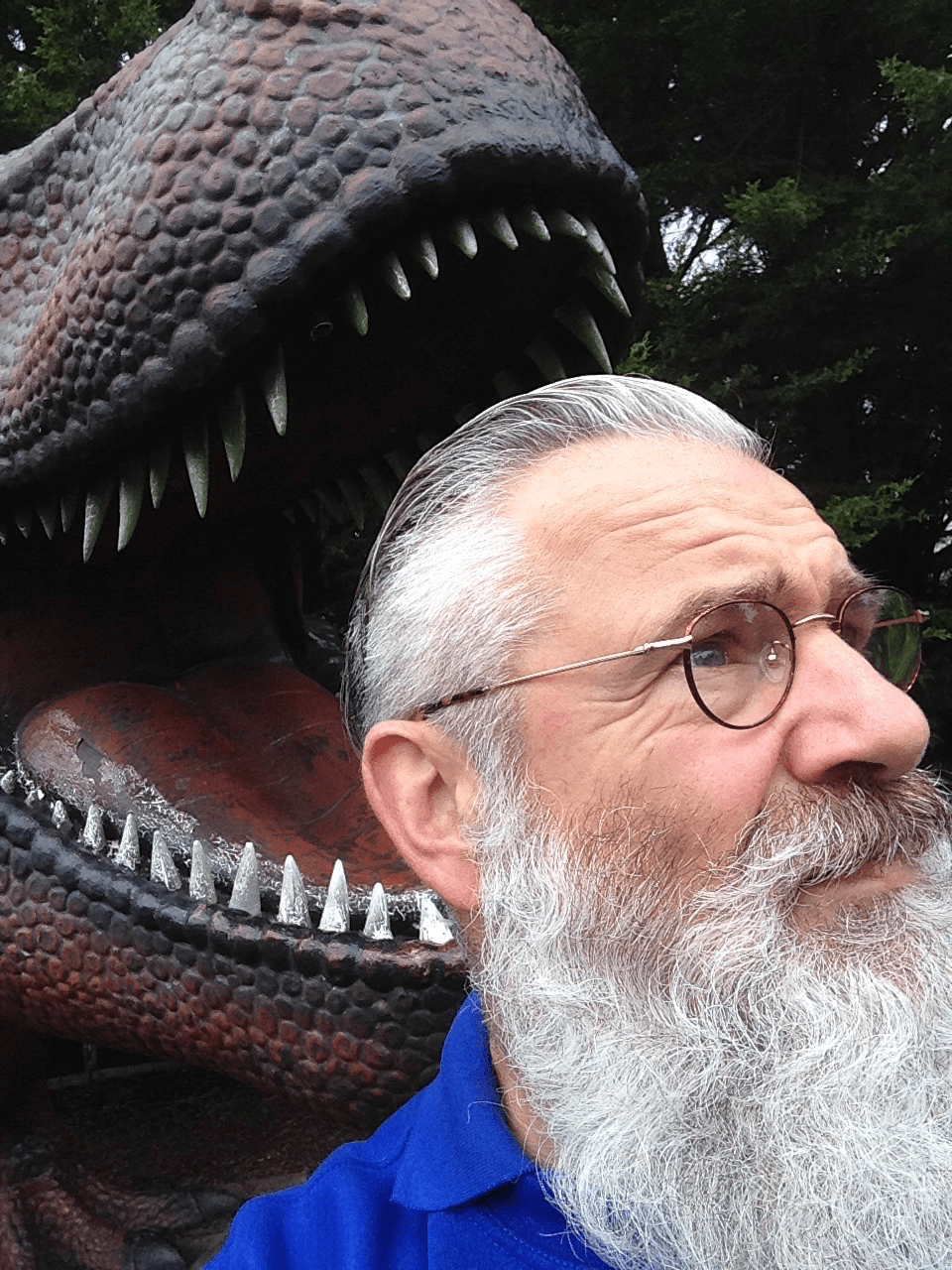
David Shenton
https://www.facebook.com/dscomics/
David Shenton was born on May 20, 1949, in Ashton-under-Lyne, Lancashire. He entered Ashton-under-Lyne College of Further Education in 1965 and Loughborough College of Art in 1967 where he studied printed textiles. He has been a cartoonist since the 1970s, with his comics appearing in The Guardian, various specialist magazines, and most gay newspapers in the UK. His work brings laughter, provokes thought, and offers comfort for the inevitable challenges people face in life. He has also tackled social issues such as same-sex marriage and the AIDS crisis. He posts daily on the DS Comics page on Facebook, works on his knitting, and continues to attend LGBTQ+ events in London and Norfolk.
–Can you tell us about your journey as a comic artist specialising in LGBTQ themes?
What inspired you to focus on this genre and cartoons as a form? Are there any particular artists, works, or episodes that have influenced or inspired your creative process?
To begin, I’ve never specialized in LGBTQ+ themes. I’m a gay man; I’ve known that since I was a teenager. So these themes are my norm. I started as a cartoonist by accident. I had a well-received painting exhibition in Manchester in the mid-1970s, which had a splendid write-up in The Guardian. I invited the gay press to review it, too. But because the subject matter wasn’t explicit, they didn’t show up. Instead of writing a letter wanting to know what constitutes gay art, I drew them a cynical cartoon. They still didn’t review the exhibition, but liked the cartoon enough to offer me a weekly space in Gay News. This space developed into a four-frame strip and eventually a book. Alongside Kate Charlesworth, we were in both of the gay papers and magazines through the mid-70s, and the 80s and 90s. Sometimes we worked together, documenting LGBTQ+ life in its entirety: politics, music, nightlife, idioms, phases, fashions, more politics, and health.
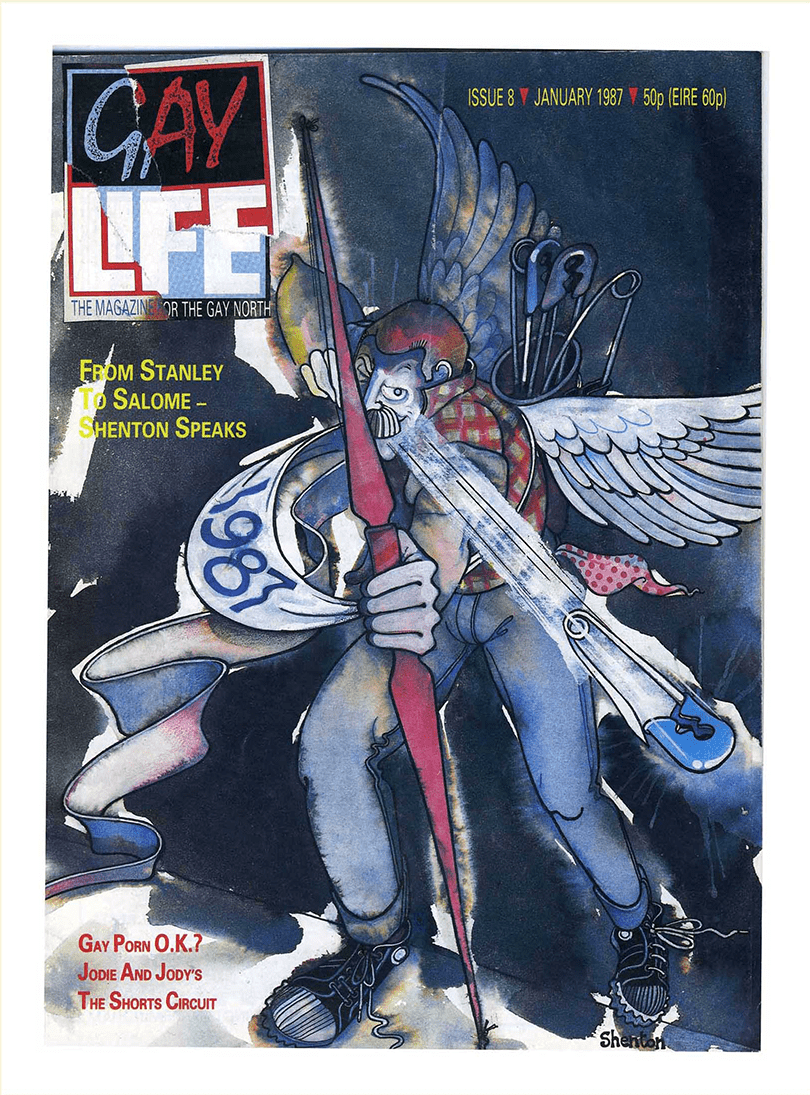
“Gay Life”, 1987
As the years went by, I became an established cartoonist. My focus was all over the place. I had strips in The Guardian and professional publications, such as Solicitor’s Journal, Building Design and The Optician. But the queer cartoons were the personal ones that carried the most clout because they covered issues that mattered to my community through those difficult years. Cartoons can highlight the shortcomings of the government – their acceptance of, and indifference to, growing homophobia, leading to a lack of essential investment in healthcare. The trans community is facing similar problems today.
My creative process had to grow up and become serious with the advent of the HIV/AIDS crisis and the iniquities of Clause 28. I deal with the age of consent in “Forty Lies“, from the viewpoint of my own personal story and the PARTIAL Decriminalisation of the Sexual Offences Act in1967. I was eighteen then and had a boyfriend who was twenty-one. The partial repeal set the age of consent at twenty-one. I was immediately classed as a minor and my boyfriend could be sent to prison as a sex offender. We had to split up. ‘My Four December Weddings’, also a personal story, in “Forty Lies“, tells of the lead up to and legalisation of Equal Marriage in 2014.
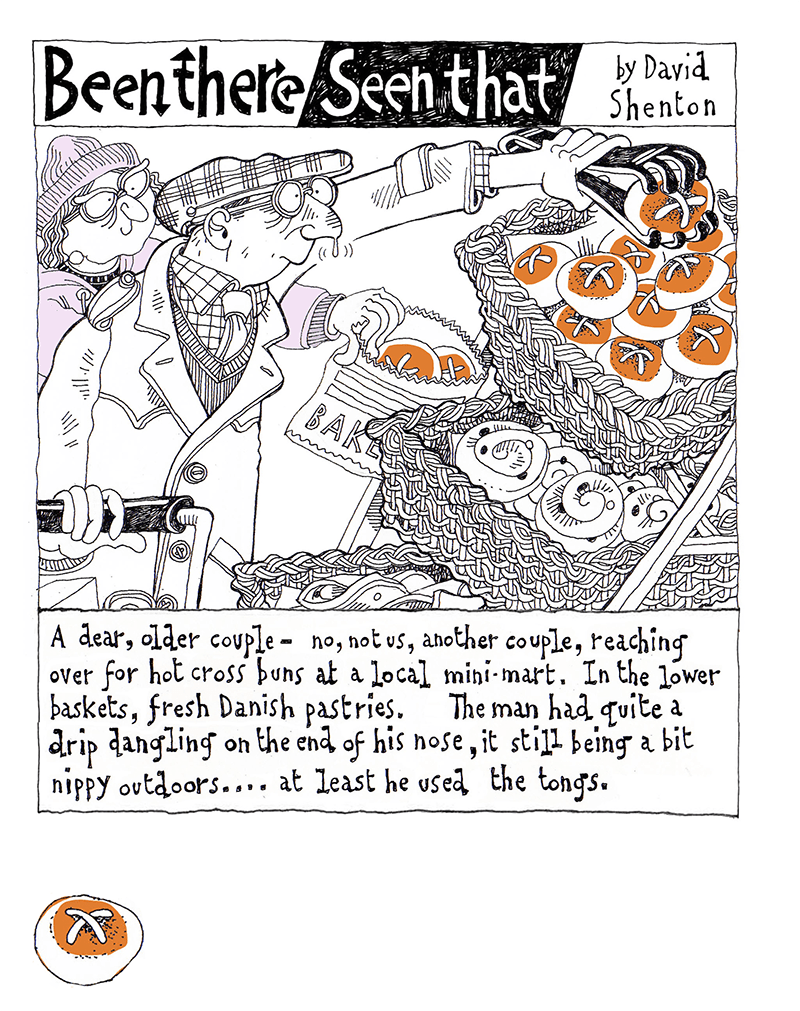
“Been there, Seen that”
I’m from the North West of England where a lot of comedians come from and many people routinely use humour to counter the difficulties of everyday life. Comedy is very serious to handle when politics and events are so dire, but it can be done. I like to be sly and funny, but I’m a kind cartoonist and let people off easily, yet still get my point across.
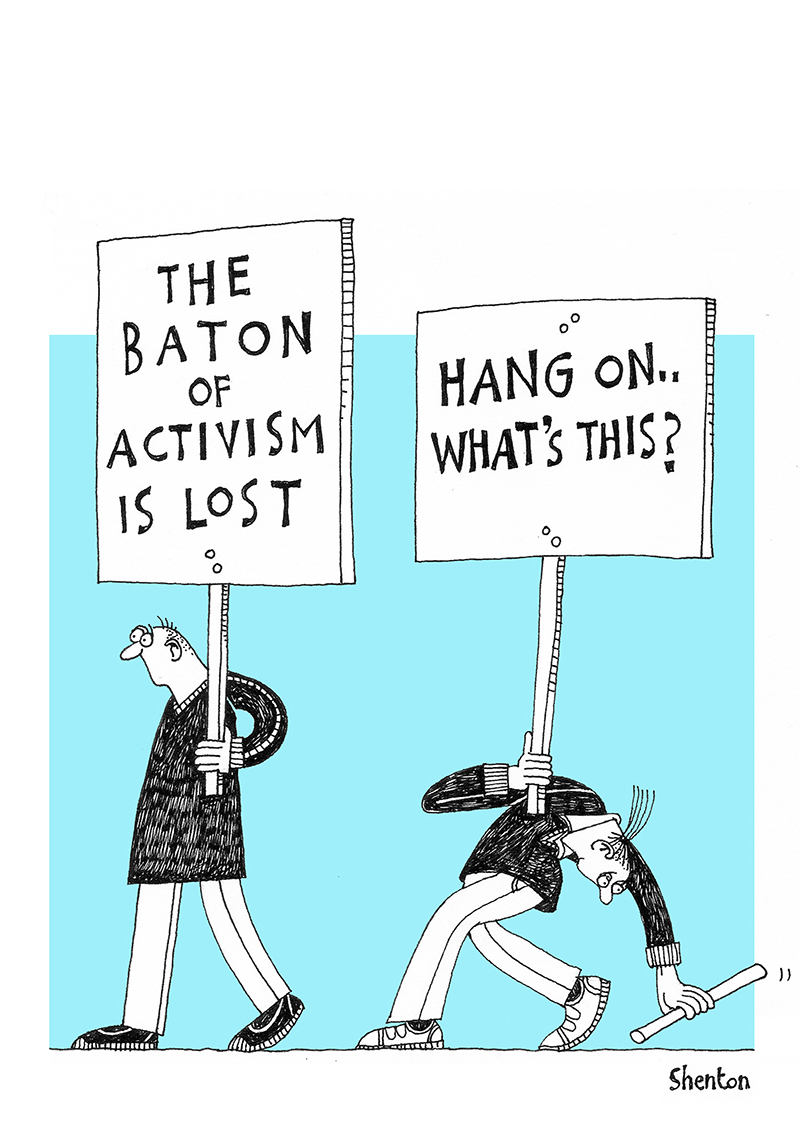
“The Baton of Activism is Lost”
–In “Forty Lies” and ‘My Four December Weddings’, there’s a clear reflection of the evolution of LGBTQ-related environments and legislation in the UK, including milestones like Section 28, change in the age of consent for gay men sex, the AIDS crisis, the legalisation of same-sex marriage and more. Have you noticed any significant shifts in audience reception or mainstream acceptance of LGBTQ comics throughout your over 40-year career?
Last week I gave a talk about “Forty Lies” and my work overall to fifty members of the Women’s Institute here in Norwich. They were aware of my sexuality and the LGBTQ+ focus of a lot of my work. This invitation and welcome to their meeting most likely wouldn’t have happened ten years ago. I am openly gay and a named patron of Norwich Pride, so people accept who I am.
–Can you share some of the most memorable reactions or feedback you’ve received about your comics and activities?
The most important reaction to my work, I suppose, is that I’ve made a career doing something I love. I’ve had eight books published; all are out of print now, except “Forty Lies”, which came out last year. The first one, “Stanley and the Mask of Mystery “(1983) was the first LGBTQ+ graphic novel to be published in Europe, and perhaps in the world. It sold very well in the USA.
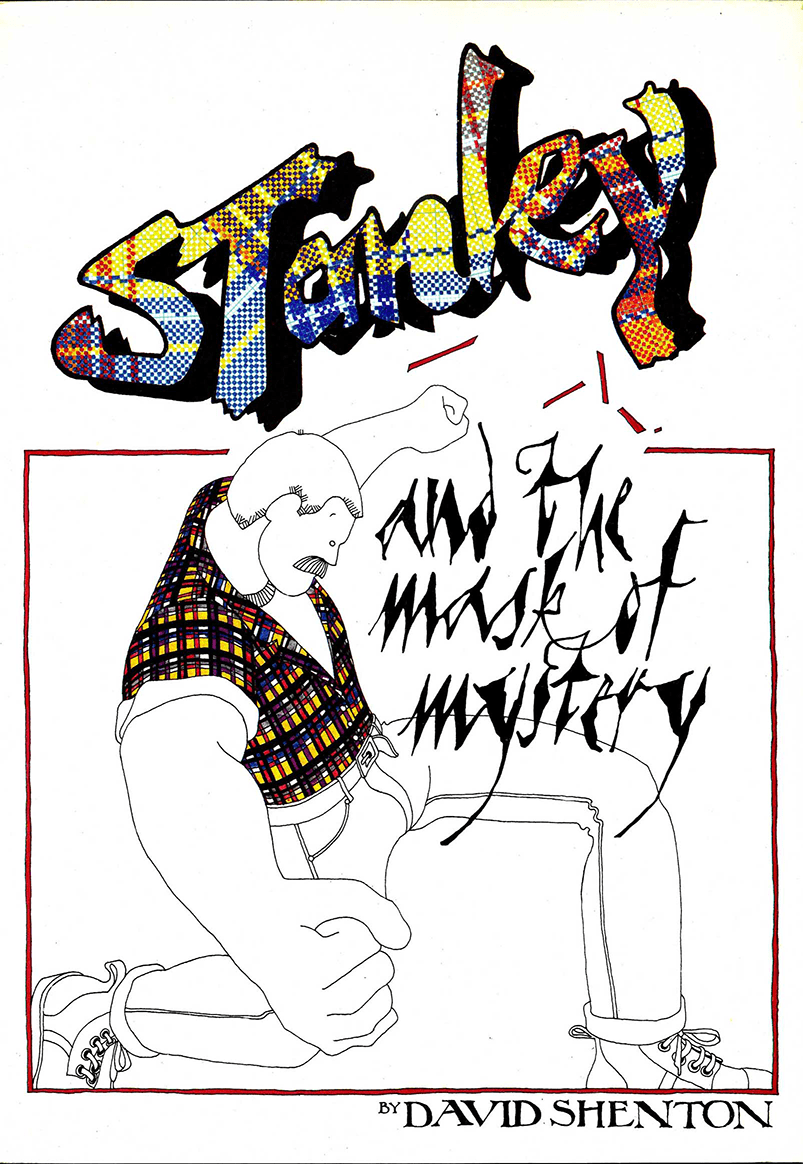
“Stanley and the Mask of Mystery”, 1983
I was once kidnapped and held to ransom in a pub by the Sisters of Perpetual Indulgence, and was only released when the pub coughed up £40 for AIDS research. In 2022, I received the Orfeo Imago Award, from Sweden, which honors outstanding contributions to LGBTQ+ art, photography and sculpture. Incidentally, this year it was awarded to Durk Dehner, the Tom of Finland Foundation President. In 2022, I was also made a patron of Norwich Arts Centre.
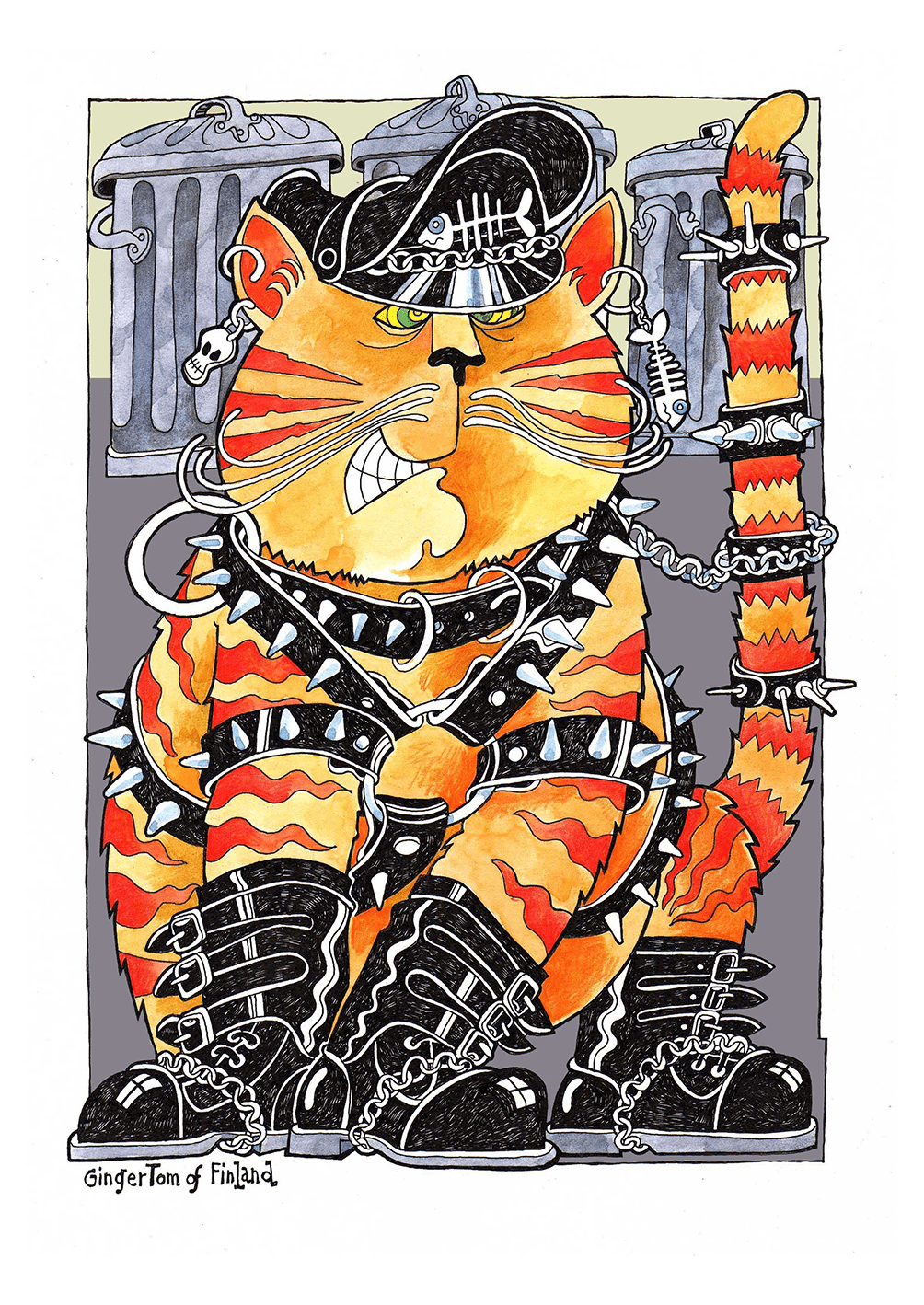
“Ginger Tom of Finland”
-As you continue to update your Facebook page almost daily with your cartoons, have you noticed any changes in the response from your readers or in your creative process compared to when your work was primarily published through traditional means? How has the internet as a platform influenced your approachand motivation to creating and sharing your cartoons?
When Facebook first came out I knew it could be useful. I was still cartooning and drawing illustrations, mainly for Cambridge University Press. All the weekly gay newspapers had disappeared, some gone forever and others becoming online publications. And the monthly gay lifestyle magazines had no use for political cartoons. So my LGBTQ+ platforms had gone. I therefore decided to upload my cartoons onto a dedicated Facebook page called These Foolish Things. This brought my queer work back into public notice, and revived my career. Through this page, I’ve produced cartoon collections and stories, printed out and sold as zines. These zines culminated in being noticed by a book publisher, who offered me “Forty Lies“. Also, my embroidered and knitted craftivist pieces have been shown in The Cartoon Museum and Sheringham Museum, and acquisitioned by the Castle Museum in Norwich and Queer Britain in London.
–Can you share any upcoming projects or plans you have?
“Forty Lies” has brought offers of conducting workshops in London, in Queer Circle and Queer Britain this summer. I haven’t stopped drawing and creating, and will do until I can no longer hold a pencil. There is still a long way to go before LGBTQ+ issues worldwide are resolved, and discrimination and hatred are replaced with equality and peace.
*All images were provided by David Shenton, and the copyright of these images belongs to him.
by Haruka Katsuyama
Resources:
DS Comics
https://www.dscomics.co.uk/ [Accessed: 09/06/2024]
Prism Comics | David Shenton
https://www.prismcomics.org/profile/davidshenton/ [Accessed: 09/06/2024]
Wikipedia
https://en.wikipedia.org/wiki/David_Shenton [Accessed: 09/06/2024]
LGBTQ+ HISTORY, English Heritage
https://www.english-heritage.org.uk/learn/histories/lgbtq-history/ [Accessed: 09/06/2024]
LGBTQ+ HISTORY BY THE DECADES(1980s-2010s), NCS
https://wearencs.com/blog/lgbtq-history-decades-1980s [Accessed: 09/06/2024]
https://wearencs.com/blog/lgbtq-history-decade-1990s [Accessed: 09/06/2024]
https://wearencs.com/blog/lgbtq-history-decades-2000s [Accessed: 09/06/2024]
https://wearencs.com/blog/lgbtq-history-decades-2010s [Accessed: 09/06/2024]

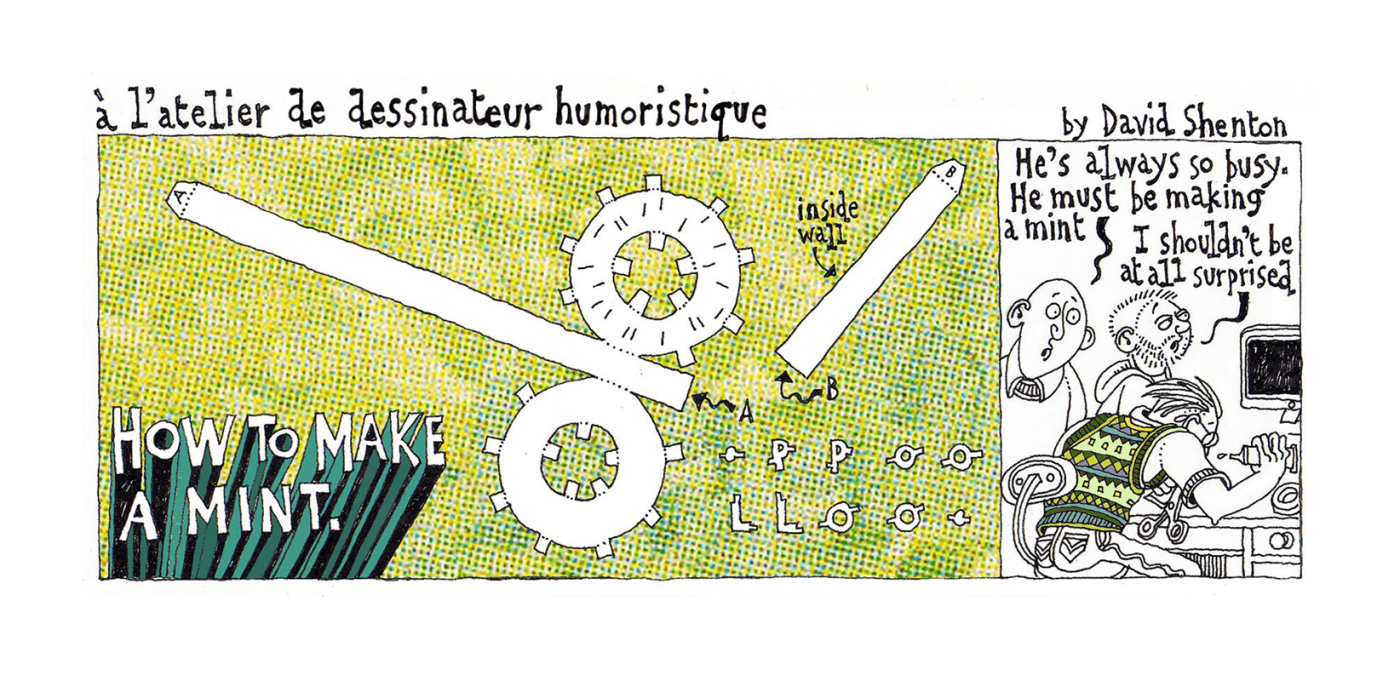
Leave a comment